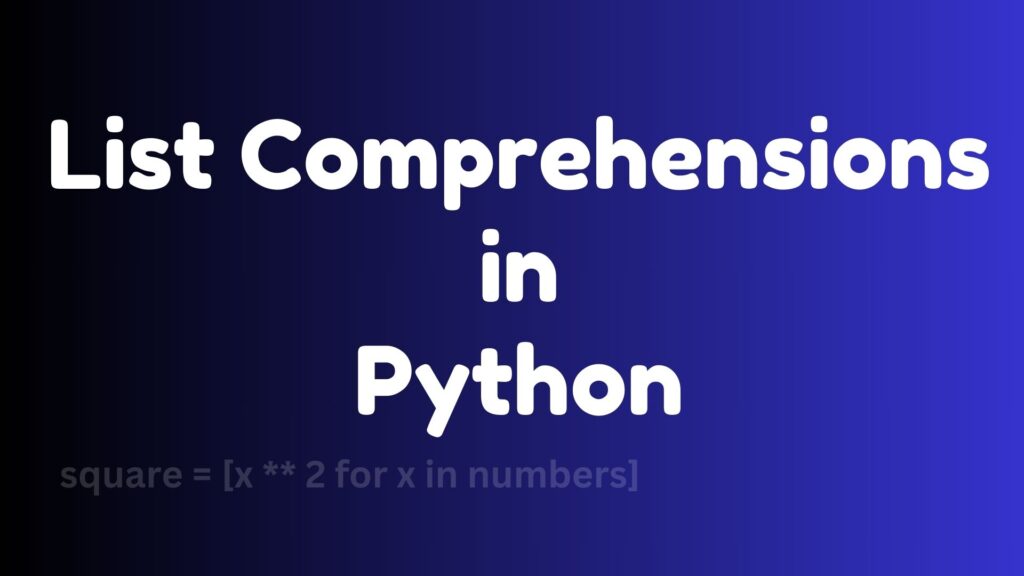List comprehensions are a concise and powerful way to create lists in Python. They allow you to generate new lists by applying an expression to each item in an existing iterable (e.g., a list, tuple, or string) and optionally filtering the items based on a condition.
List comprehensions are not only more readable than traditional for loops but also more efficient in many cases.
In this blog post, we will explore the syntax of list comprehensions, their benefits, and common use cases.
Basic Syntax
The basic syntax of a list comprehension consists of the following components:
new_list = [expression for item in iterable if condition]
- expression: This is the operation you want to perform on each item in the iterable.
- item: A variable that represents each element in the iterable.
- iterable: The existing collection you want to iterate over.
- condition (optional): An optional filter that determines whether an item should be included in the new list.
Let’s break down the components with some examples:
Example 1: Squaring Numbers
numbers = [1, 2, 3, 4, 5]
squared_numbers = [x ** 2 for x in numbers]
In this example, we square each number in the numbers list and store the results in the squared_numbers list using a list comprehension.
Example 2: Filtering Odd Numbers
numbers = [1, 2, 3, 4, 5]
odd_numbers = [x for x in numbers if x % 2 != 0]
Here, we filter out the even numbers from the numbers list and create a new list called odd_numbers.
Benefits of List Comprehensions
List comprehensions offer several advantages:
- Readability: List comprehensions make your code more concise and easier to read, especially for simple operations on iterable elements.
- Performance: List comprehensions are often faster than traditional
forloops because they are optimized internally by Python. - Functional Approach: They encourage a more functional programming style, which can lead to cleaner and more maintainable code.
- Reduced Boilerplate: You don’t need to create an empty list and append elements to it in multiple steps; list comprehensions do it in one line.
Nesting List Comprehensions
You can also nest list comprehensions to create more complex data structures. For example, you can create a list of lists or apply a comprehension within another comprehension.
Example: Matrix Transposition
matrix = [[1, 2, 3], [4, 5, 6], [7, 8, 9]]
transpose = [[row[i] for row in matrix] for i in range(len(matrix[0]))]
Here, we transpose a matrix using nested list comprehensions.
Using if condition in List Comprehensions
List Comprehensions can also have if condition. For example, if you want only square of odd numbers from a given range then it can be done in the following way:
odd_squares = [x*x for x in range(10) if x % 2 != 0]
# [1, 9, 25, 49, 81]
When to Use List Comprehensions
List comprehensions are best suited for scenarios where you want to create a new list by transforming or filtering an existing iterable. However, they may not be the best choice when:
- The logic inside the comprehension becomes too complex, making the code less readable.
- You need to perform multiple operations on each item; in such cases, a traditional for loop may be more readable.
Conclusion
List comprehensions are a valuable tool in Python for creating new lists from existing iterables. They offer concise and readable code, improved performance, and a functional programming approach. Understanding when and how to use list comprehensions can significantly enhance your Python coding skills and help you write more efficient and elegant code.
Related: How to Unpacking in Python: Simple Guide with Examples



